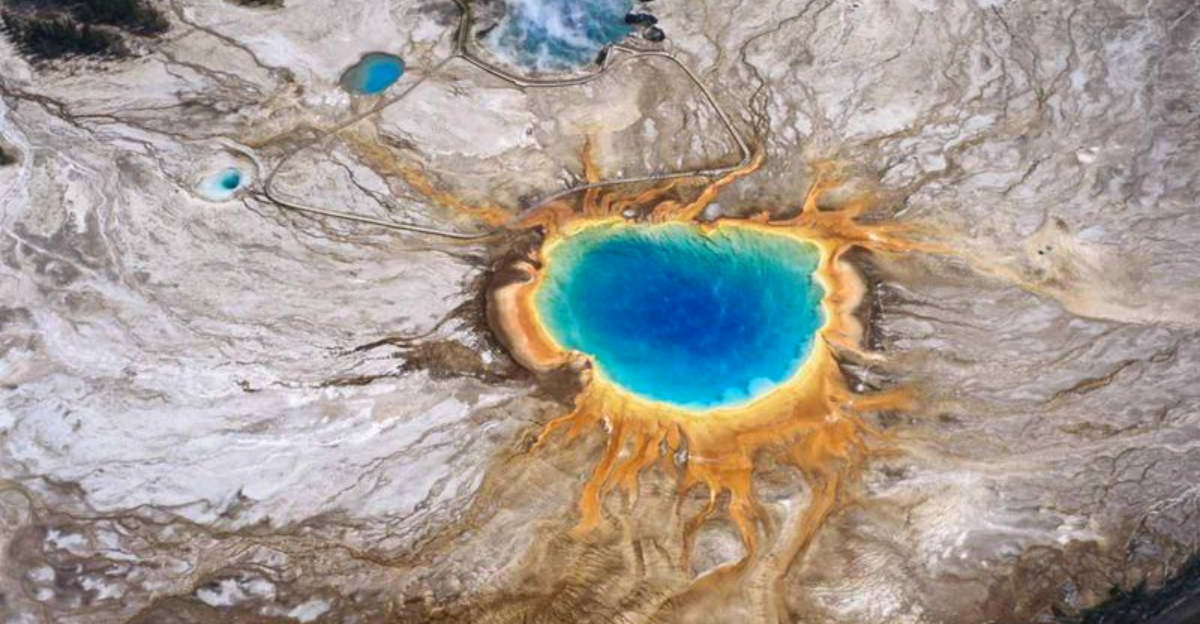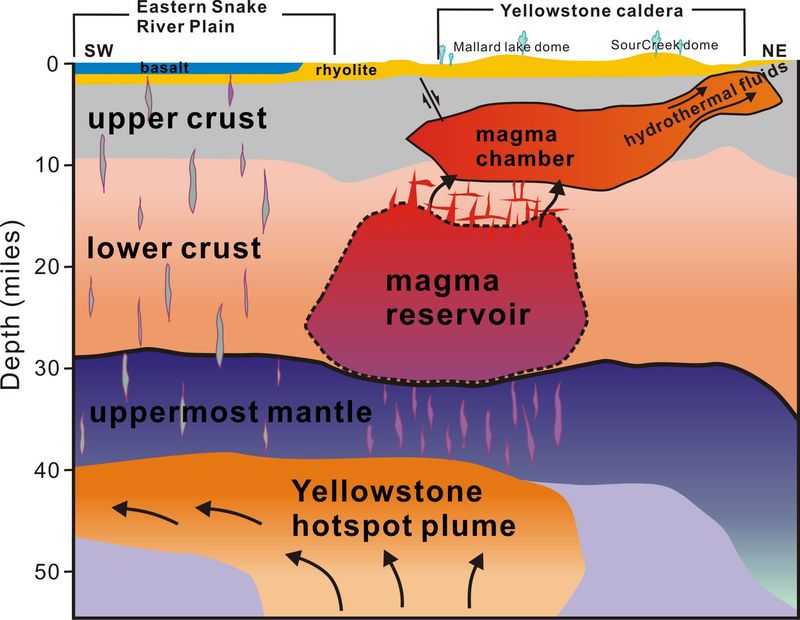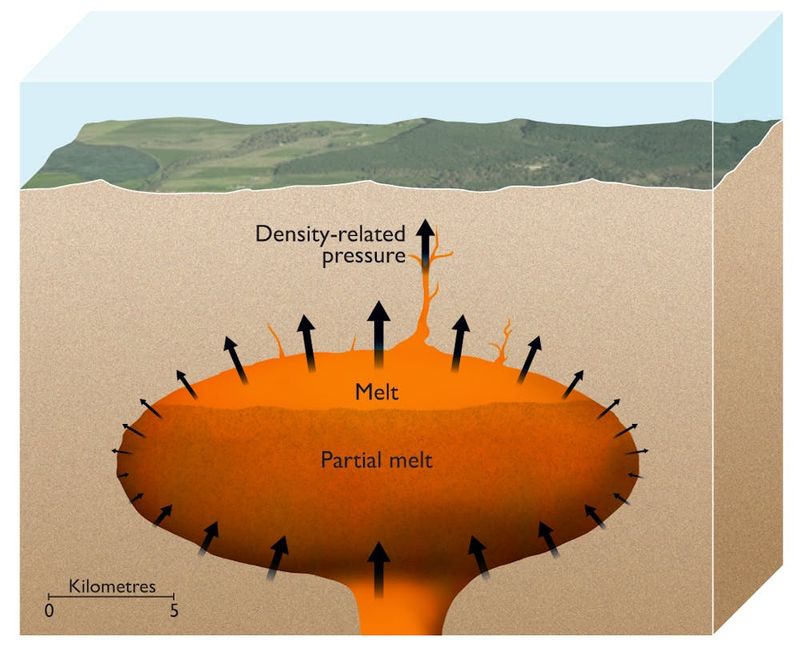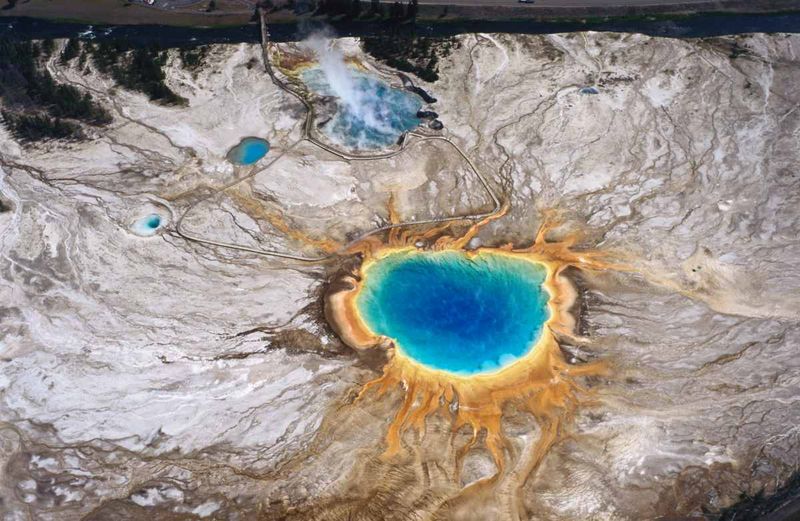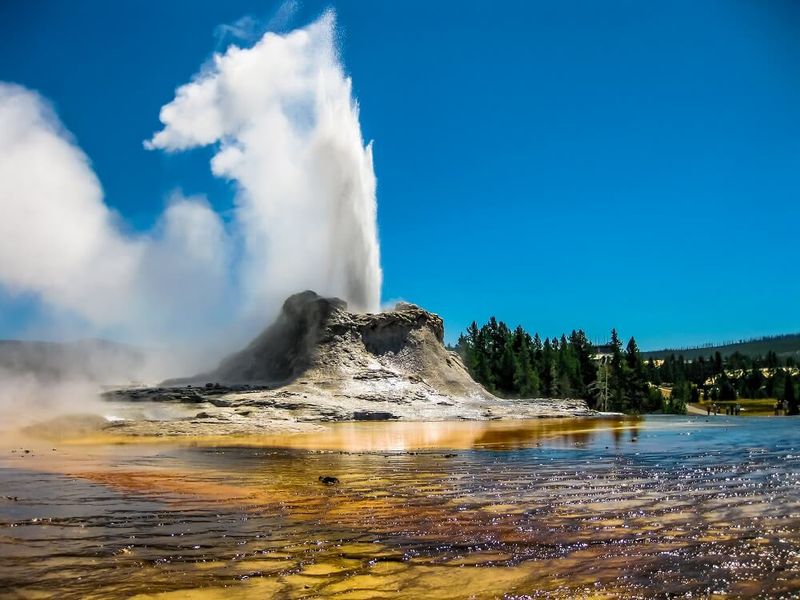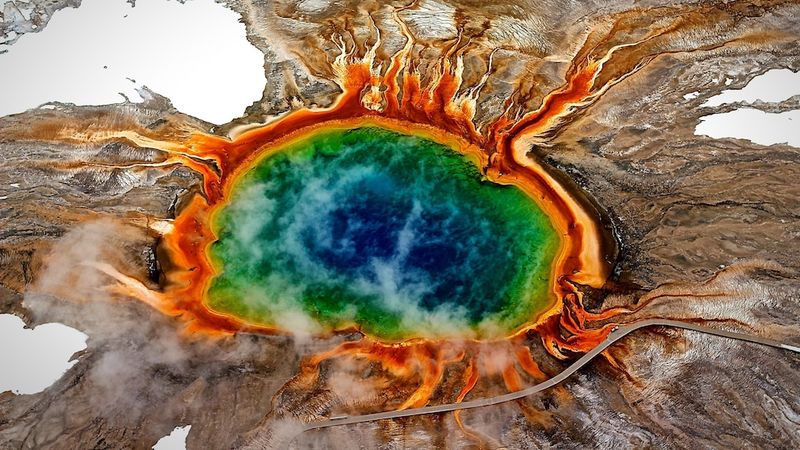Yellowstone National Park sits above one of the world’s largest supervolcanoes, a fact that has worried scientists for decades. Recent discoveries have changed our understanding of what’s happening deep underground. Scientists have found a special layer of rock and fluid about 2.4 miles below the surface that might be keeping the volcano stable and preventing massive eruptions.
A Geological Shield Beneath the Surface
Hidden beneath Yellowstone’s colorful hot springs and dramatic geysers lies an unexpected protector. The newly discovered magma cap works like a natural lid on a pot, containing the immense heat and pressure that builds up in the supervolcano’s reservoir.
This 2.4-mile-deep barrier consists of partially melted rock and pockets of super-hot fluid that scientists believe has existed for millions of years. Rather than being a sign of danger, this layer actually helps regulate the volcano’s internal forces.
Researchers now understand that this geological feature plays a crucial role in maintaining Yellowstone’s long-term stability, challenging previous theories about how supervolcanoes function.
How the Magma Cap Operates
The magma cap functions as nature’s pressure-relief system. Unlike a sealed container ready to explode, this porous layer allows gases to escape gradually through tiny pathways in the rock, similar to how a pressure cooker releases steam.
When magma rises from deeper chambers, the cap prevents it from surging upward while simultaneously permitting carbon dioxide and water vapor to vent safely. This steady release mechanism helps maintain a delicate balance within the volcanic system.
Without this natural safety valve, pressure could build to dangerous levels. The cap’s discovery explains why Yellowstone experiences constant small-scale activity rather than catastrophic eruptions.
Seismic Imaging and Discovery
Finding something buried miles underground requires extraordinary tools. Scientists employed a massive 53,000-pound vibroseis truck—essentially a giant ground-thumping machine—to send controlled vibrations deep into the earth.
As these vibrations bounced back, specialized equipment captured the returning waves, creating a detailed map of what exists beneath Yellowstone. The process works similarly to an ultrasound for the planet, revealing structures invisible to the human eye.
This advanced imaging technique pinpointed the magma cap at precisely 2.4 miles deep, much more accurately than previous estimates that varied widely from 1.8 to 5 miles below the surface.
The Role of Gas Venting
Volcanic gas buildup poses one of the greatest explosion risks in any volcanic system. Imagine shaking a soda can—the pressure inside becomes dangerous when trapped.
Yellowstone’s magma cap prevents this scenario through a remarkable natural design. As hot magma rises toward the surface, gases separate and find escape routes through the cap’s porous structure, reaching the surface through hot springs, mud pots, and geysers.
This constant release acts as Yellowstone’s safety mechanism. By allowing gases to escape gradually rather than building up catastrophically, the system maintains a relatively peaceful state despite the enormous energy contained within.
Implications for Volcano Monitoring
Understanding the magma cap transforms how scientists monitor Yellowstone’s activity. Previously, researchers focused primarily on earthquake patterns and ground deformation as warning signs of potential eruptions.
The discovery provides a new framework for interpretation. By tracking changes in gas emissions, temperature fluctuations, and the behavior of the cap itself, scientists can develop more accurate early warning systems.
This revised model challenges old assumptions about supervolcanoes and could lead to improved hazard assessments worldwide. Communities near Yellowstone can take comfort knowing that this natural lid helps keep one of Earth’s most powerful forces in a state of relative equilibrium.
